Currently Empty: €0.00
Nestled in the southern suburbs of Dublin, Rathfarnham Castle was one of the most surprising and enriching stops on our exploration of the city’s historical landmarks. During our guided tour, that lasted for about one hour we could be able to see the changes in Ireland, from the Elizabethean times to the early 20th century when the castle was bought by the state from the catholic church. It was an atmospheric and educational experience that revealed much more than we expected from what initially looked like a stately but reserved country house.
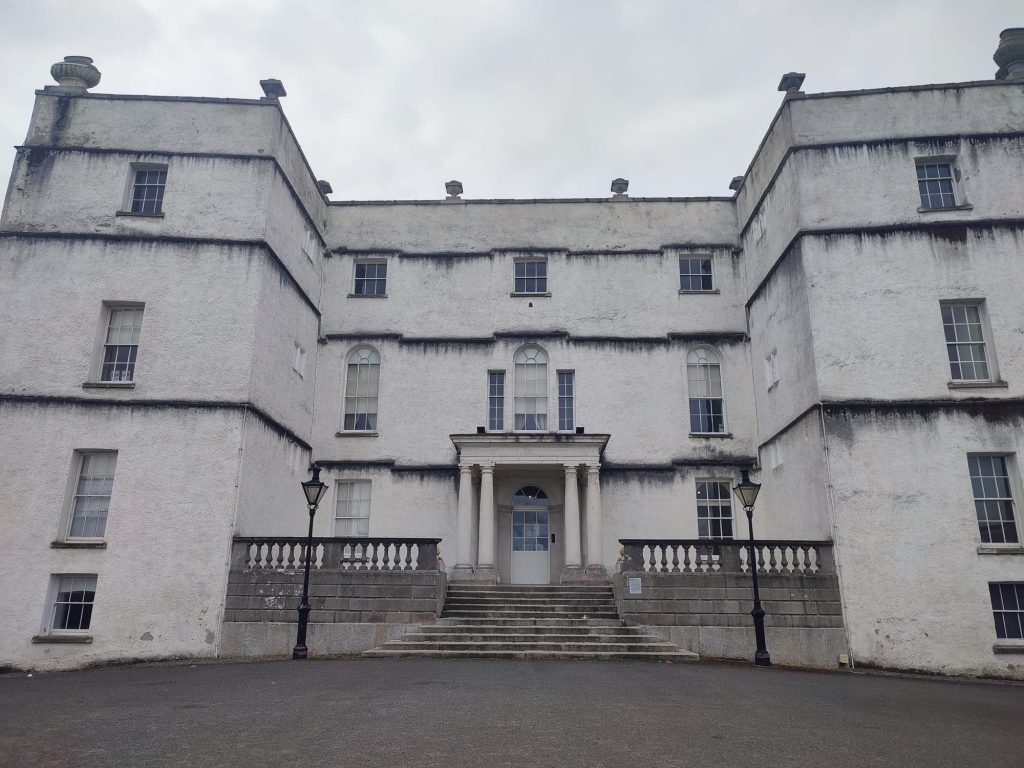
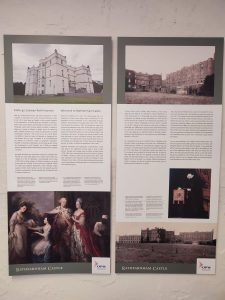 Rathfarnham Castle is just a short journey from Dublin city center and it is surrounded by a peaceful parkland. Built in the late 16th century, it was originally a fortified house for Adam Loftus, the Archbishop of Dublin and Lord Chancellor of Ireland. It started as a defensive residence in troubled times: in fact the castle was built on the land taken from the Irish clans and so it was reinforced with thicker walls on the part facing away from the city. Centuries later the castle evolved into a refined Georgian mansion when it returned to the Loftus family. It was carefully changed to reflect shifting tastes, owners, and functions. The contrast between its fortified origins and graceful later additions makes it a fascinating example of Irish architectural evolution.
Rathfarnham Castle is just a short journey from Dublin city center and it is surrounded by a peaceful parkland. Built in the late 16th century, it was originally a fortified house for Adam Loftus, the Archbishop of Dublin and Lord Chancellor of Ireland. It started as a defensive residence in troubled times: in fact the castle was built on the land taken from the Irish clans and so it was reinforced with thicker walls on the part facing away from the city. Centuries later the castle evolved into a refined Georgian mansion when it returned to the Loftus family. It was carefully changed to reflect shifting tastes, owners, and functions. The contrast between its fortified origins and graceful later additions makes it a fascinating example of Irish architectural evolution.
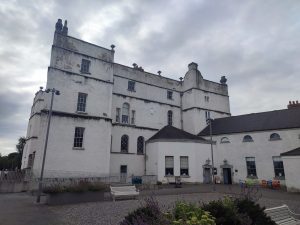 The castle from the outside, with its symmetrical facade and corner towers, still gives the idea of its original purpose. You can still see the odd shape of the four towers of the castle. They are not quite a perfect square, but that’s because their particular shape gave the defenders of the casle a wider view of the surrounding area. These towers also featured particularly shaped holes from which youcould shoot whoever intended to attack the building. The long approach through the landscaped grounds gives it dignity and calm: this entrance was built as a way to espress the great power of the family owning the castle.
The castle from the outside, with its symmetrical facade and corner towers, still gives the idea of its original purpose. You can still see the odd shape of the four towers of the castle. They are not quite a perfect square, but that’s because their particular shape gave the defenders of the casle a wider view of the surrounding area. These towers also featured particularly shaped holes from which youcould shoot whoever intended to attack the building. The long approach through the landscaped grounds gives it dignity and calm: this entrance was built as a way to espress the great power of the family owning the castle. 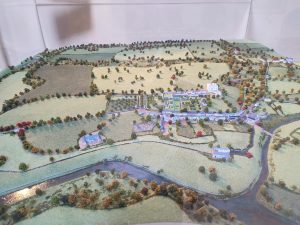 Once inside, however, the interior offers a much richer and more surprising experience. Our guide, who was very knowlegdeable and passionate about the castle, was very friendly and explained calmly and clearly the history of the place, while leading us through some beautifully restored rooms. He explained the building’s transitions from fortress to family home, and even its brief use as a Jesuit school.
Once inside, however, the interior offers a much richer and more surprising experience. Our guide, who was very knowlegdeable and passionate about the castle, was very friendly and explained calmly and clearly the history of the place, while leading us through some beautifully restored rooms. He explained the building’s transitions from fortress to family home, and even its brief use as a Jesuit school.
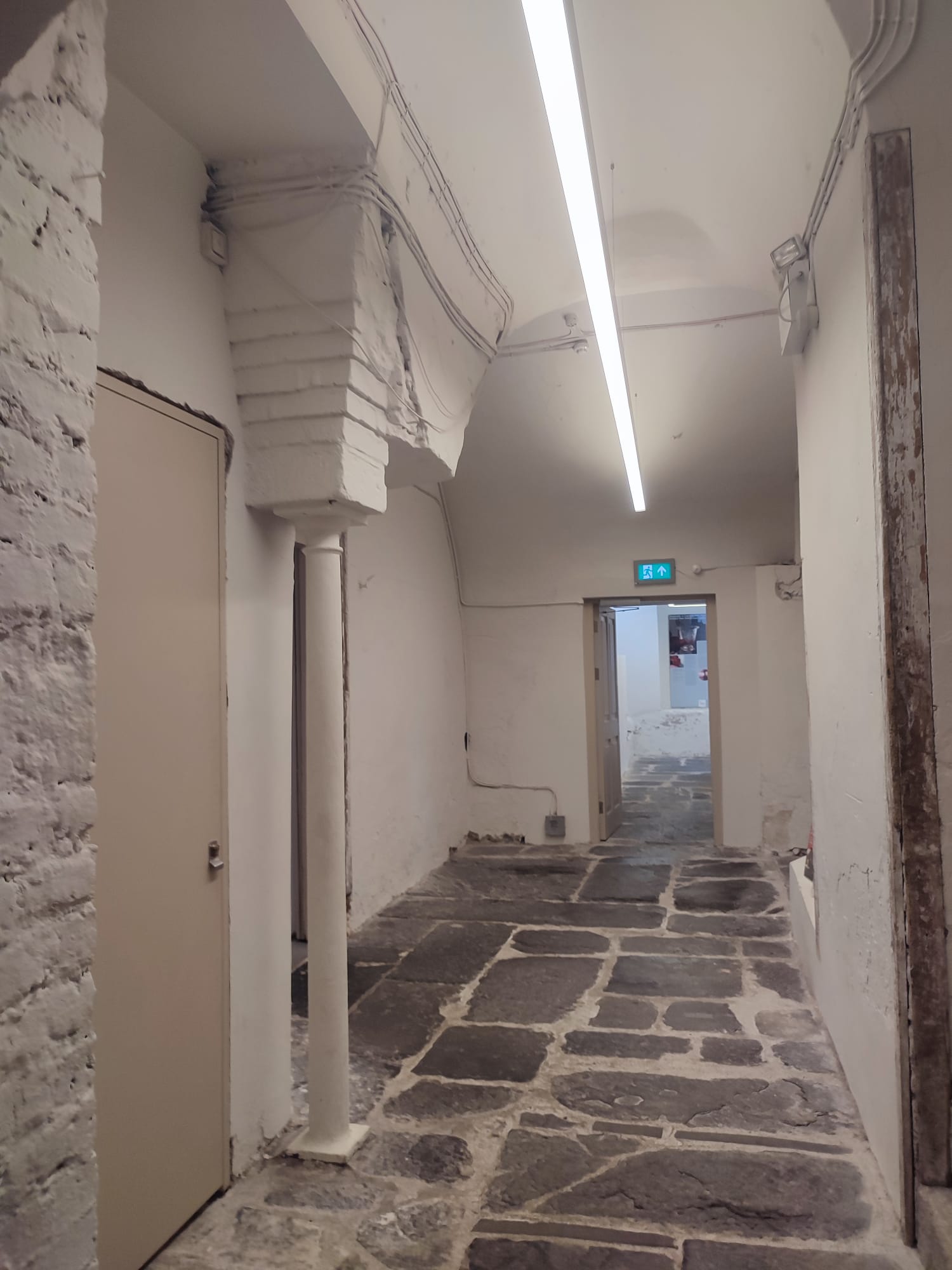
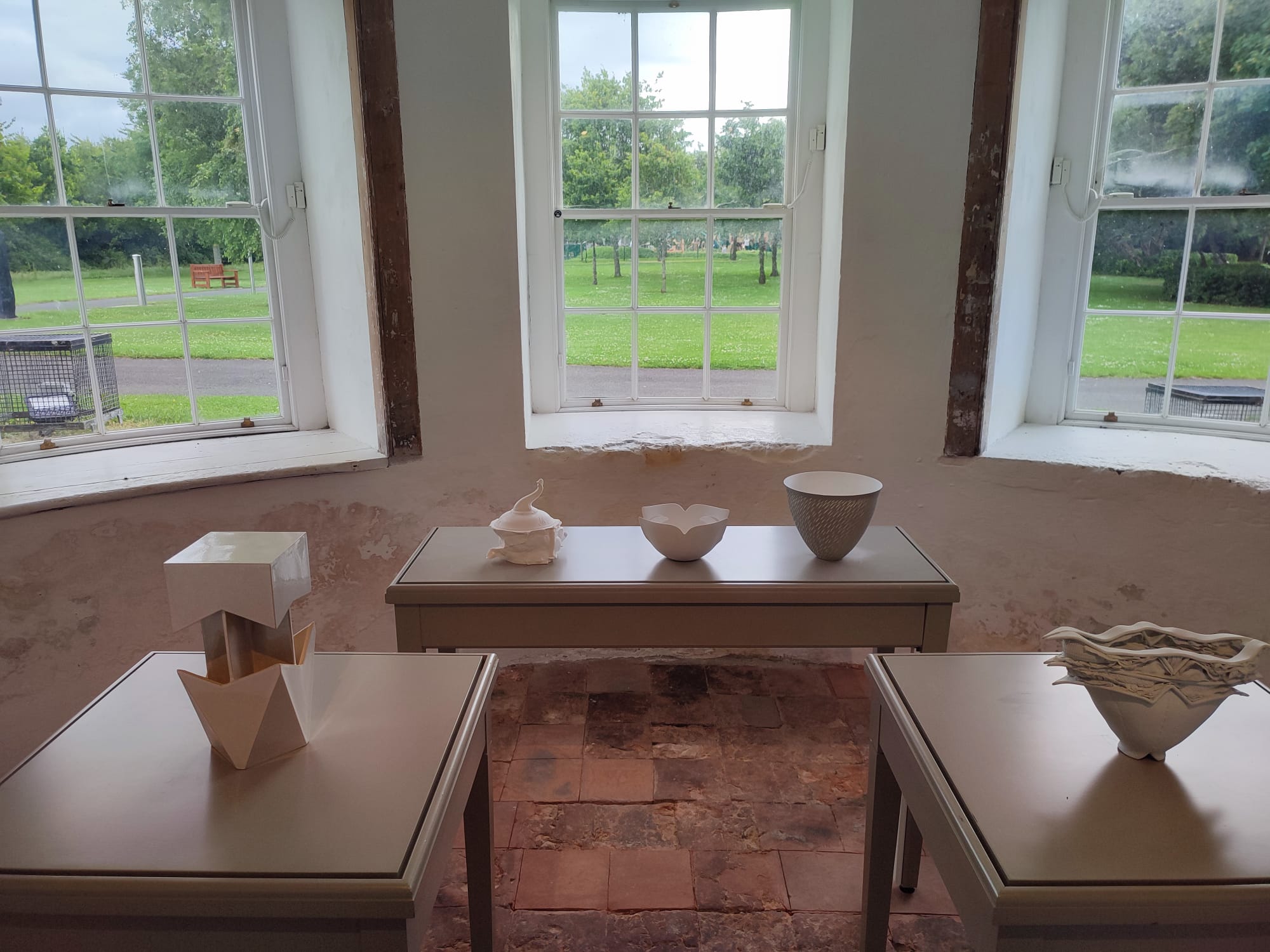
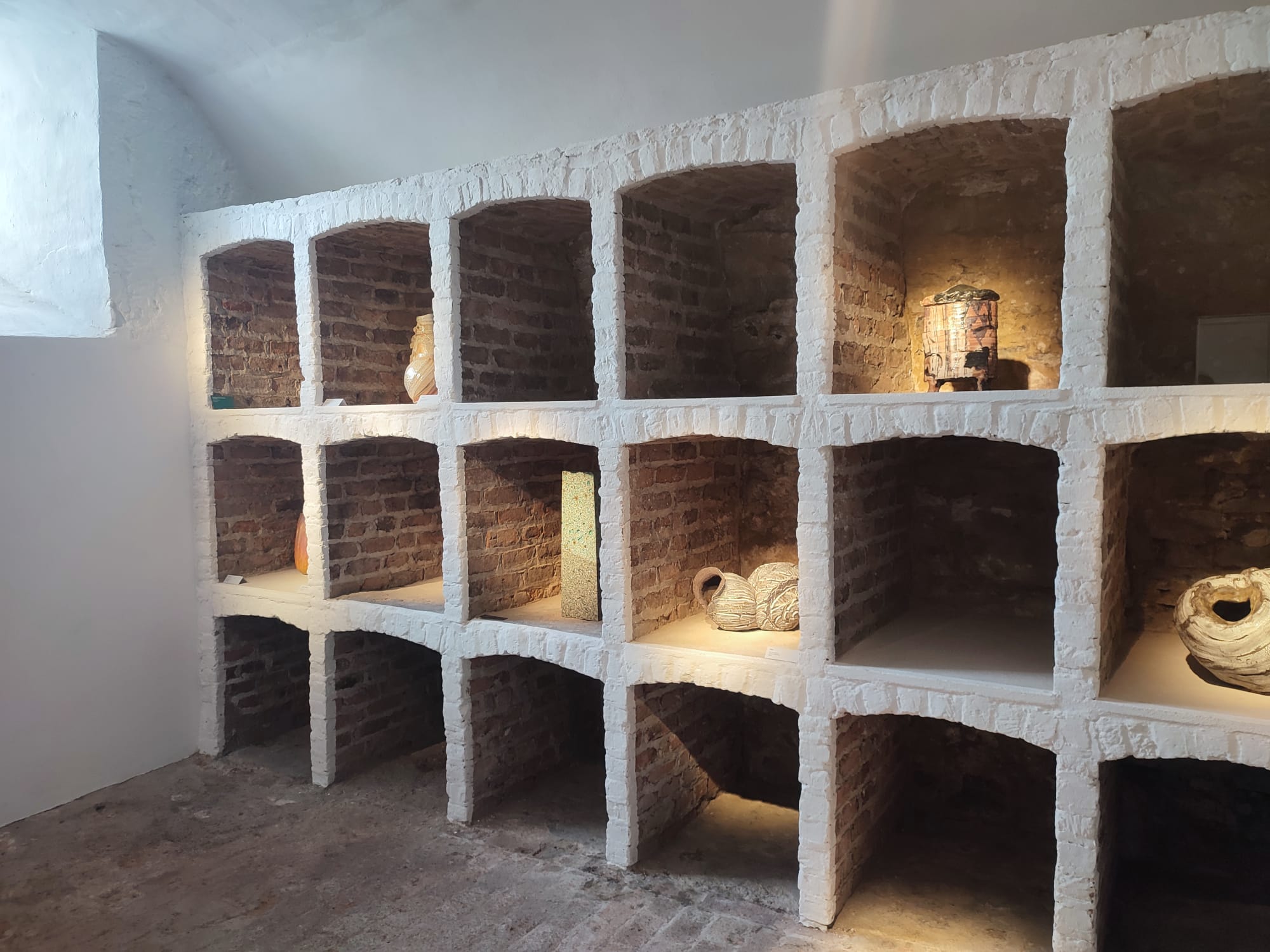
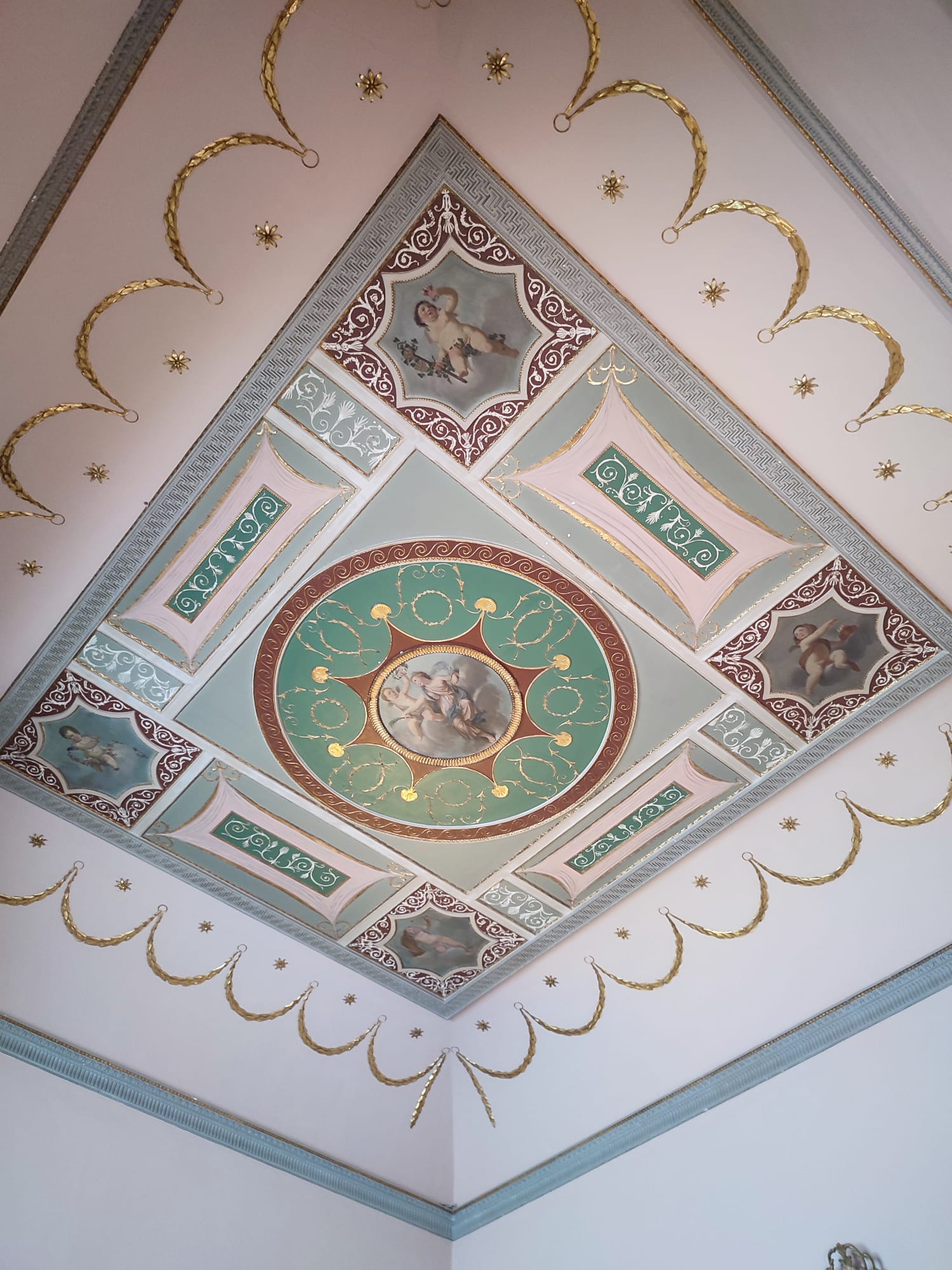
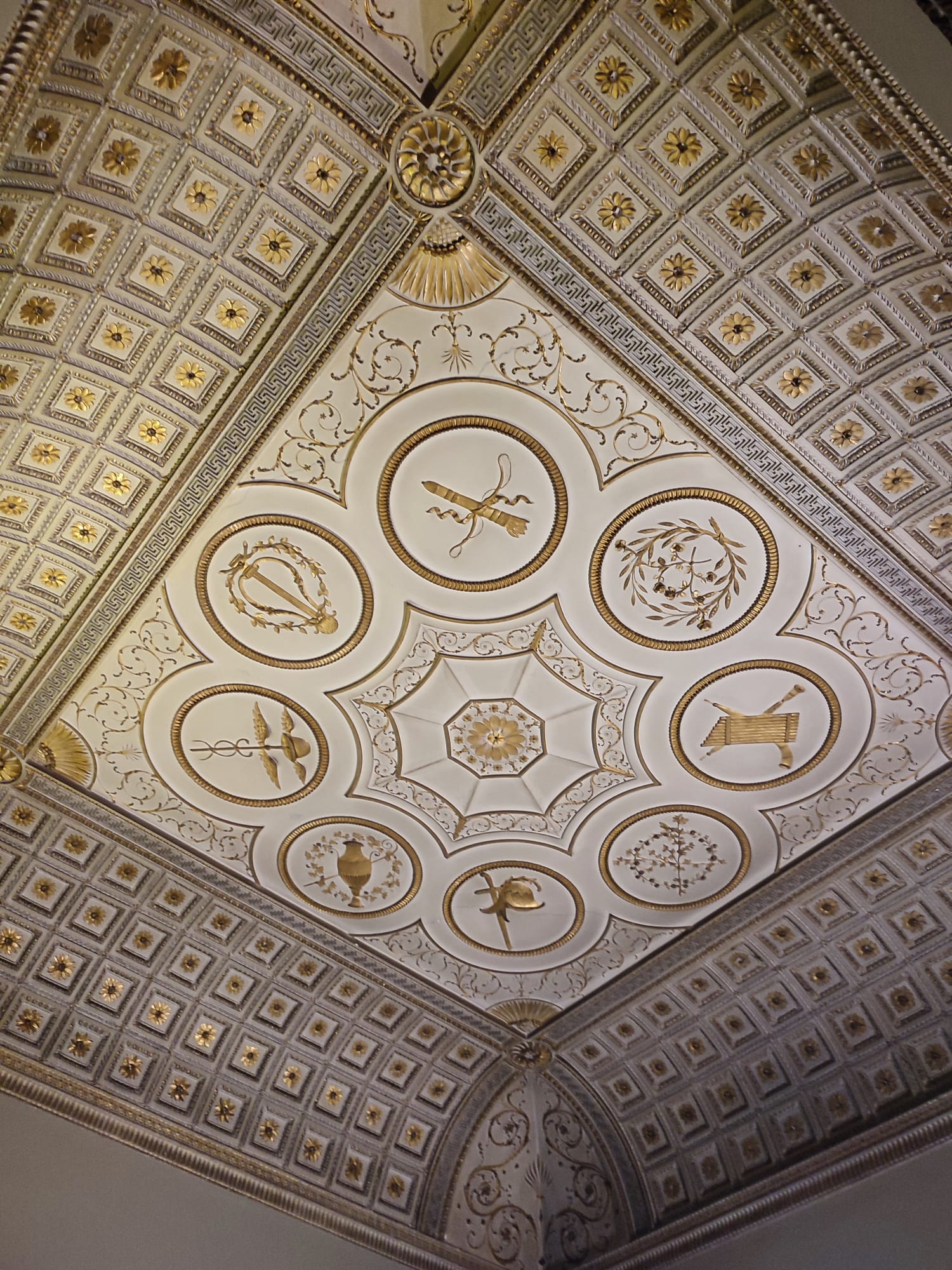
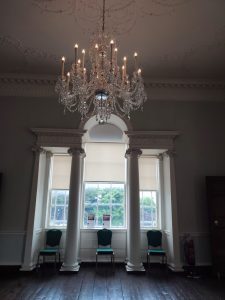 Each room we visited told a different chapter of the castle’s story. It connects a series of salons, dining rooms, and drawing rooms that have been carefully furnished with copies of period furniture and artwork, much of it reflecting 18th and 19th-century tastes. That’s because most of them were sold by a landlord who acquired the castle for a short period. It remains only one piece of original furniture that comes from the castle. Particularly impressive was the reception room on the first floor that was used to accomodate guests and host big events. Its pale stucco ceiling and tall windows bathe the room in natural light. The guide pointed out subtle details like hidden servants’ doors and a restored fireplace that had been hidden behind walls for decades.
Each room we visited told a different chapter of the castle’s story. It connects a series of salons, dining rooms, and drawing rooms that have been carefully furnished with copies of period furniture and artwork, much of it reflecting 18th and 19th-century tastes. That’s because most of them were sold by a landlord who acquired the castle for a short period. It remains only one piece of original furniture that comes from the castle. Particularly impressive was the reception room on the first floor that was used to accomodate guests and host big events. Its pale stucco ceiling and tall windows bathe the room in natural light. The guide pointed out subtle details like hidden servants’ doors and a restored fireplace that had been hidden behind walls for decades.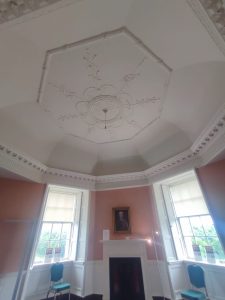 One of the most intriguing parts of the tour was the exhibition space on the upper floors. Here, paintings, original plans, a 3D representation of the area surrounding the building during the period of Henry Loftus, helped us understand the castle’s transformation over time. This highlight also showed the surrounding bawn walls and corner bastions, designed not only for status but also for defense when Dublin’s outskirts were far from peaceful.
One of the most intriguing parts of the tour was the exhibition space on the upper floors. Here, paintings, original plans, a 3D representation of the area surrounding the building during the period of Henry Loftus, helped us understand the castle’s transformation over time. This highlight also showed the surrounding bawn walls and corner bastions, designed not only for status but also for defense when Dublin’s outskirts were far from peaceful.
The restoration work, which is still ongoing in some areas, has been done with great care and attention to historical accuracy. 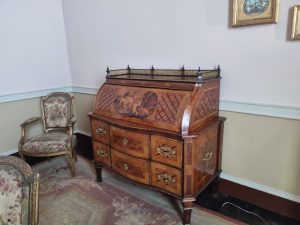 Our guide said that one particular room however has been left unrestored intentionally, with the aim of preserving its originality and show visitors how was the castle at the moment it was acquired by the irish government. It’s clear that the castle is viewed not just as a monument but as a living link to the people who passed through it, including noble families, military officers, servants, and students. As the guide pointed out, Rathfarnham Castle reflects social and cultural changes as much as it does architectural ones.
Our guide said that one particular room however has been left unrestored intentionally, with the aim of preserving its originality and show visitors how was the castle at the moment it was acquired by the irish government. It’s clear that the castle is viewed not just as a monument but as a living link to the people who passed through it, including noble families, military officers, servants, and students. As the guide pointed out, Rathfarnham Castle reflects social and cultural changes as much as it does architectural ones.
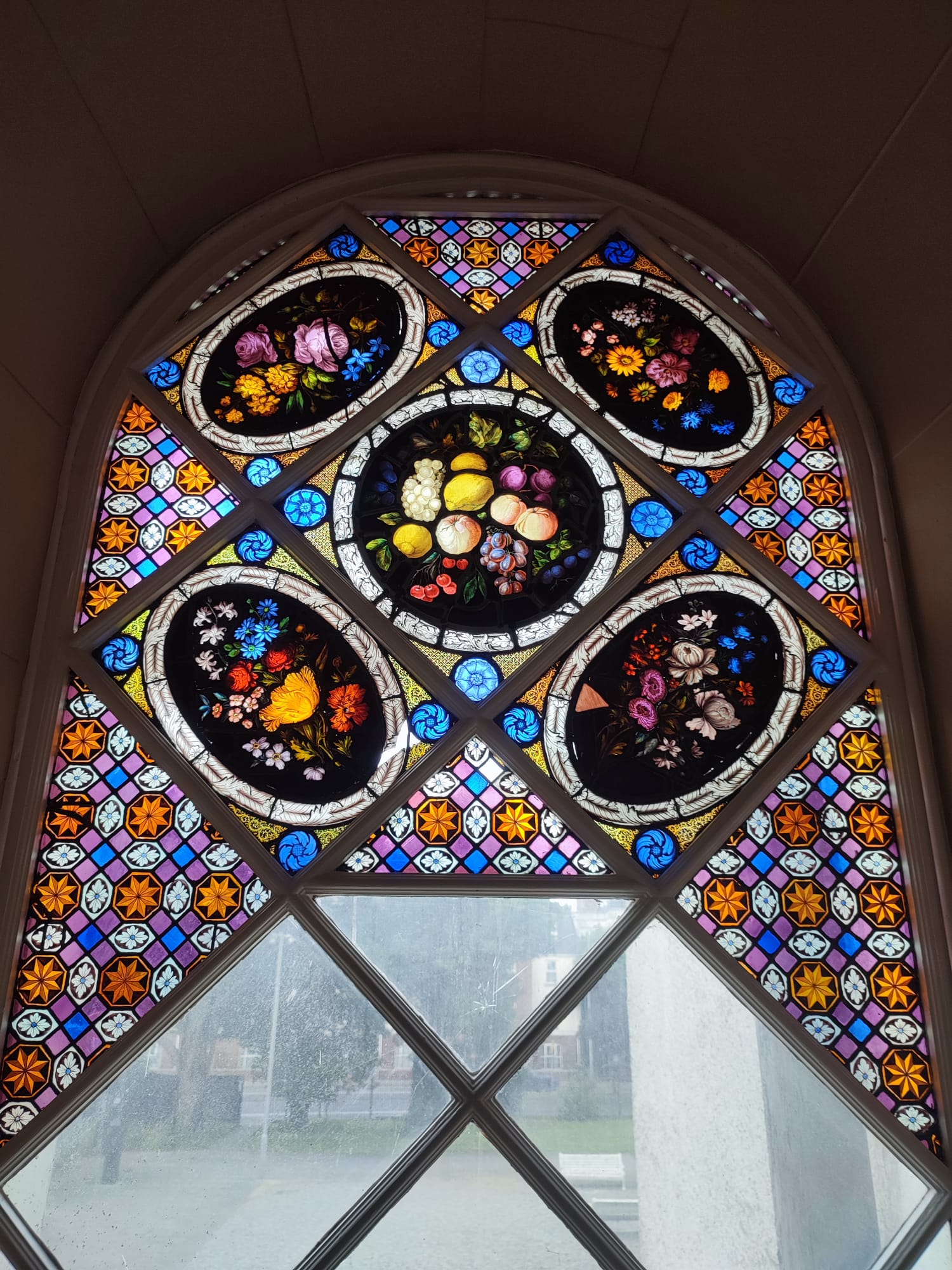
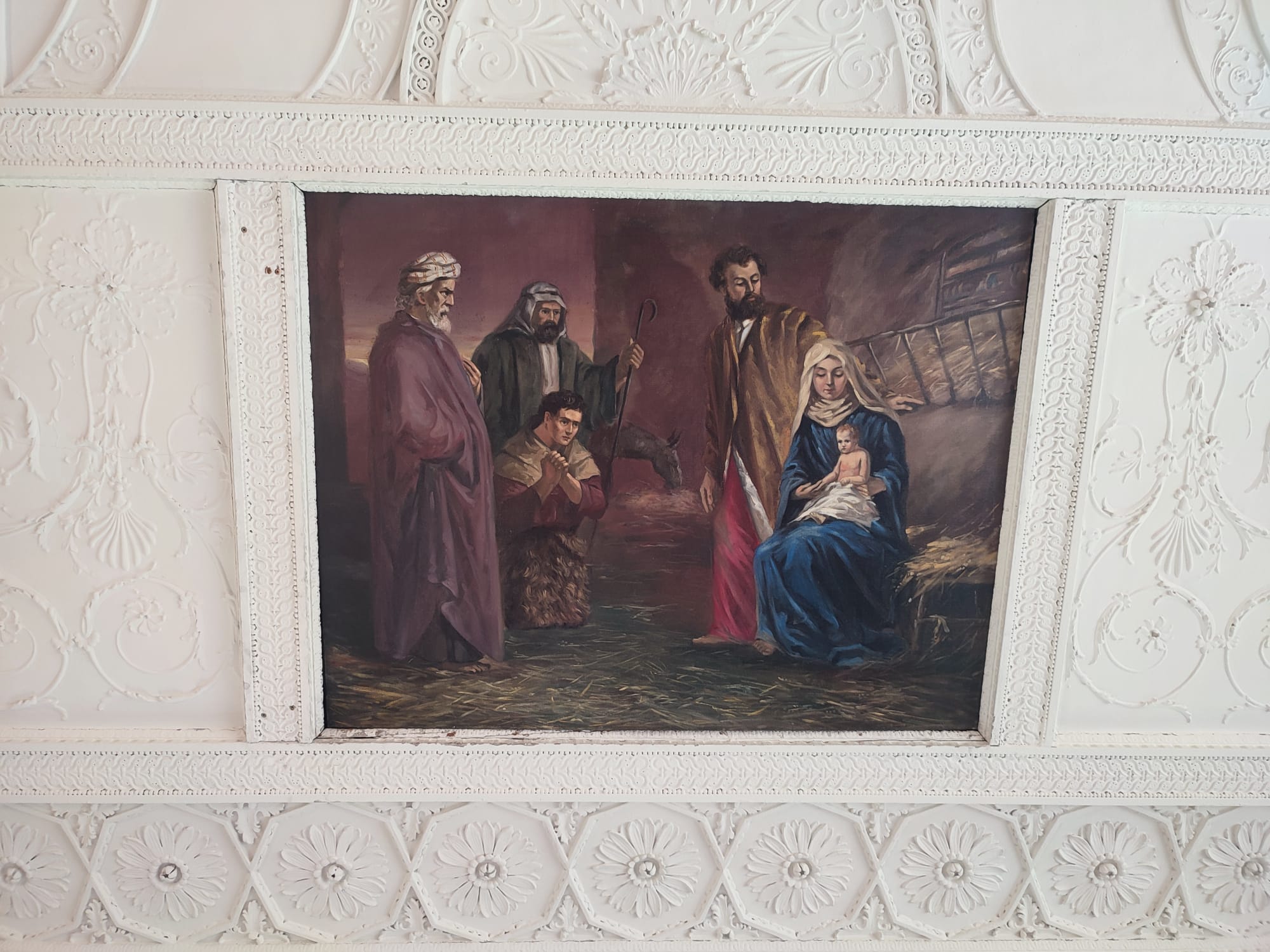
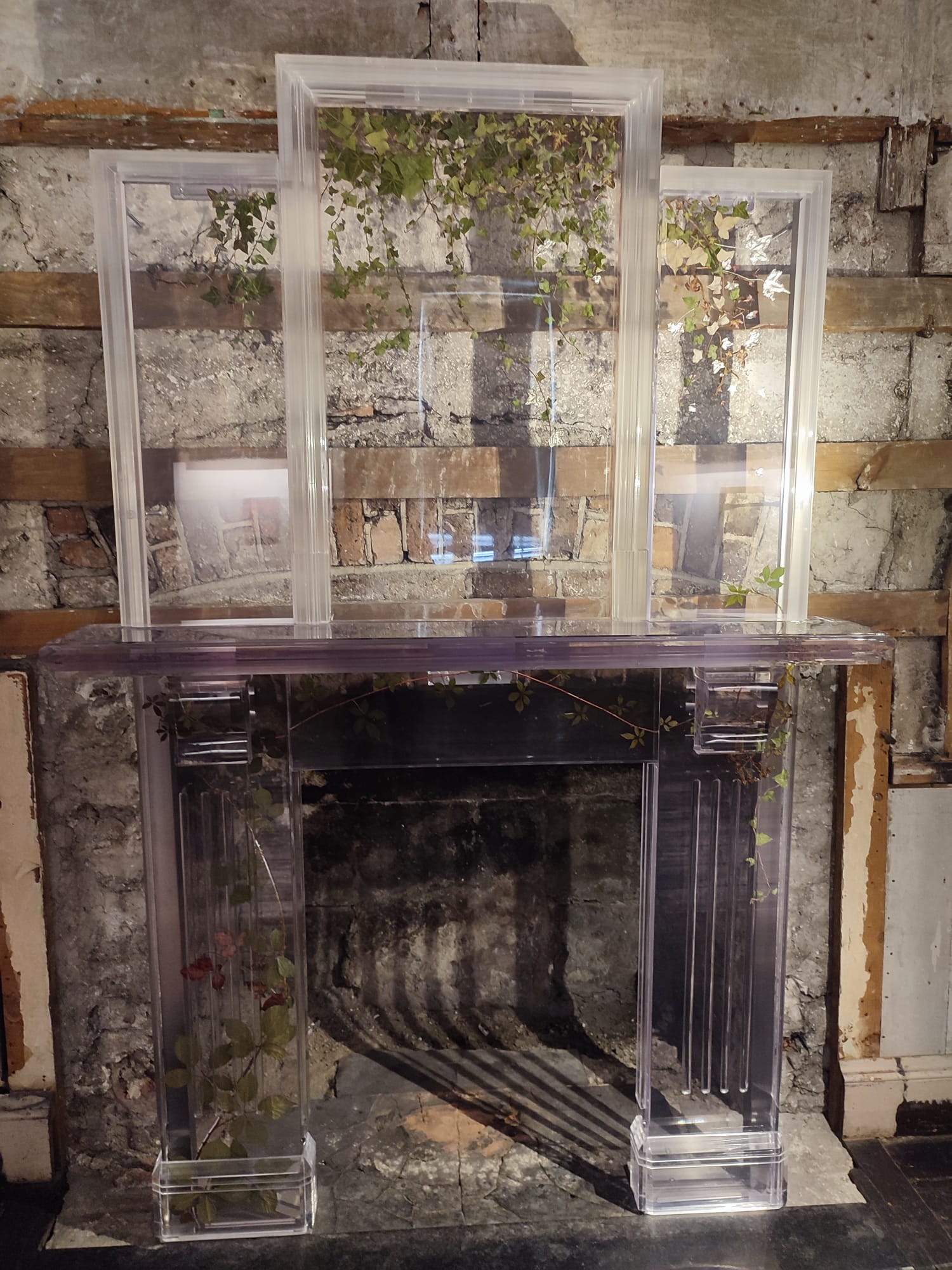
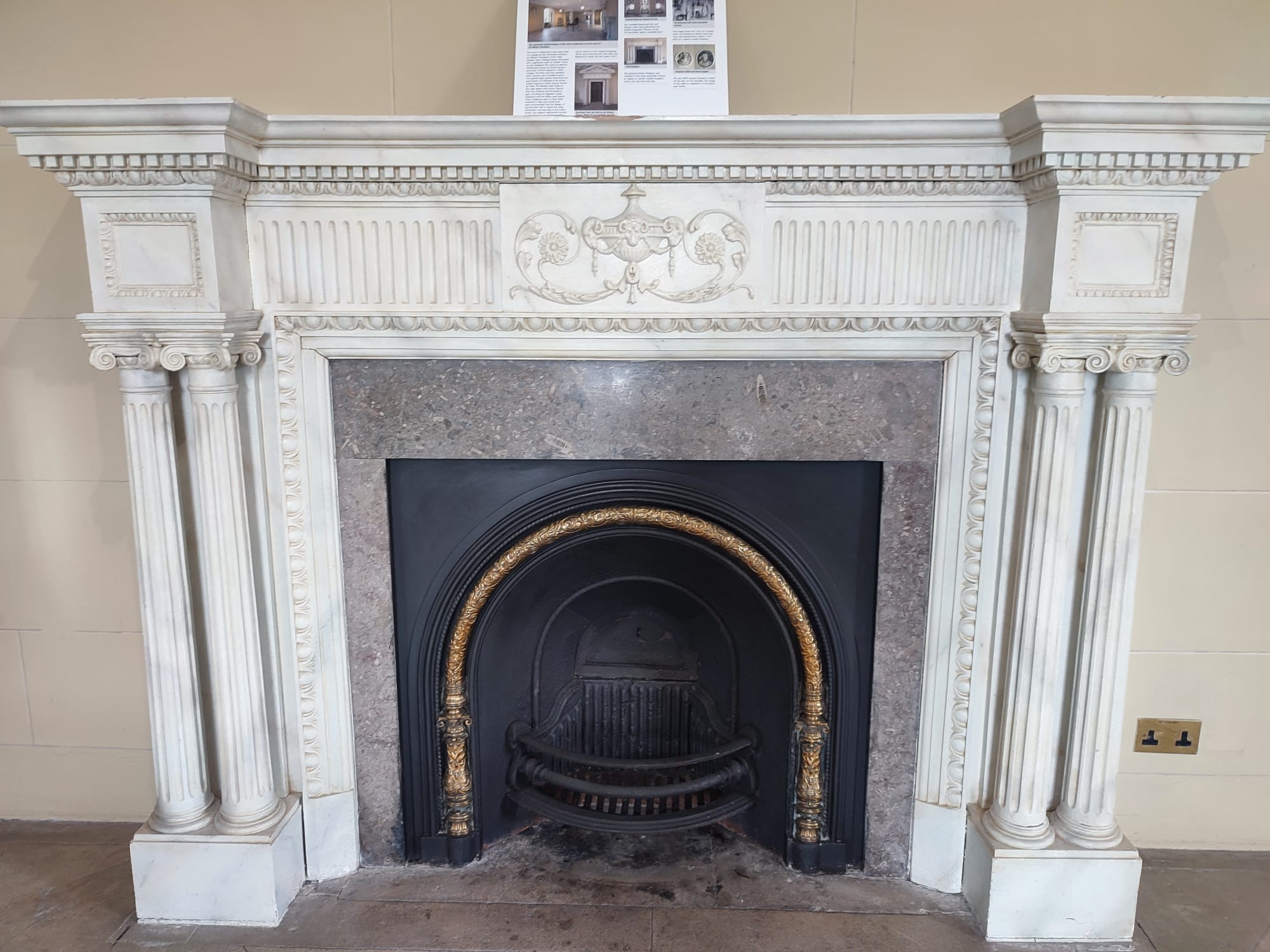
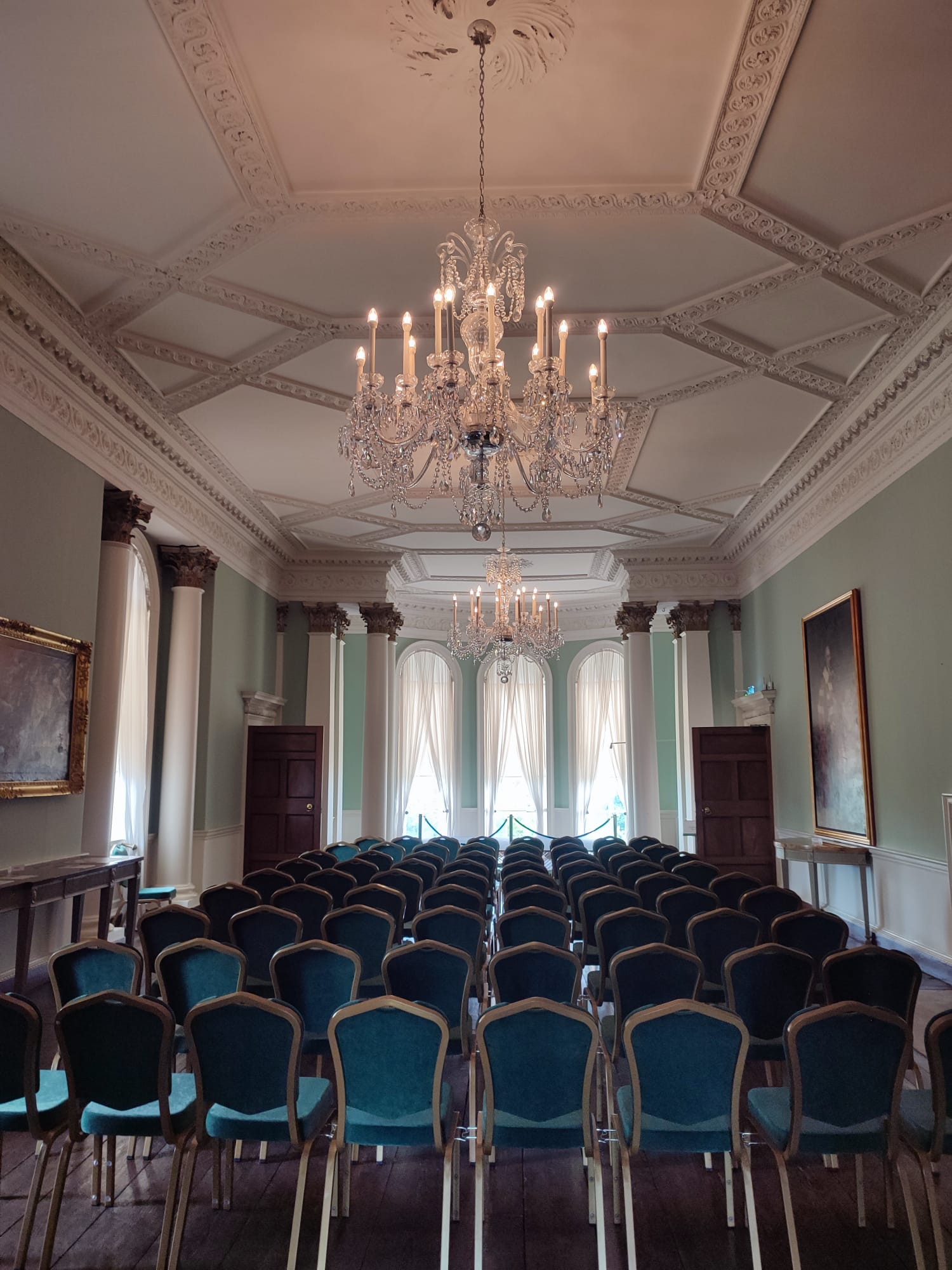
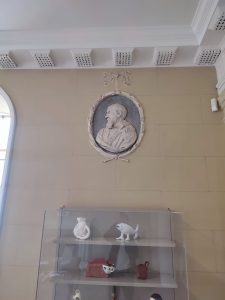 Although it lacks the elaborate ornamentation of some European palaces, Rathfarnham Castle has its own charm. It’s quiet, reflective, and full of thoughtful details. For example in one of the main rooms, there are attached to the walls some stone represetations of important cultural figures such as the italians Dante, Petrarch and Michelangelo. Before we left, we spent some time in the cozy tearoom on the ground floor, which served homemade cakes and offered a quite place to rest. There’s also a small gift shop featuring local crafts and history books for those looking to take a piece of the experience home. This part of the castle as the guide had told us during the tour has been built later than the main structure and served as a kitchen. This was made for a reason: move the dangerous fireplace from the centre of the castle to a more isolated room, in fact protecting all the rest of the building.
Although it lacks the elaborate ornamentation of some European palaces, Rathfarnham Castle has its own charm. It’s quiet, reflective, and full of thoughtful details. For example in one of the main rooms, there are attached to the walls some stone represetations of important cultural figures such as the italians Dante, Petrarch and Michelangelo. Before we left, we spent some time in the cozy tearoom on the ground floor, which served homemade cakes and offered a quite place to rest. There’s also a small gift shop featuring local crafts and history books for those looking to take a piece of the experience home. This part of the castle as the guide had told us during the tour has been built later than the main structure and served as a kitchen. This was made for a reason: move the dangerous fireplace from the centre of the castle to a more isolated room, in fact protecting all the rest of the building.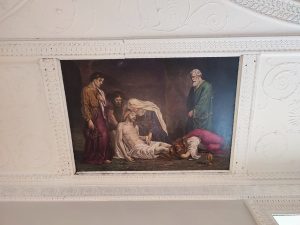 In conclusion, our visit to Rathfarnham Castle was extremely rich and memorable, as the guide was really friendly. The mix of historical storytelling, architectural beauty, and peaceful setting made for an ideal afternoon. Throught the year the castle hosts various temporary exposition. At the time of our visit there were some modern piecies of art located into various rooms. Like the Casino at Marino, it shows that some of Dublin’s finest experiences are hidden in plain sight. Entry is affordable, and guided tours are available throughout the day, though larger groups should book in advance to ensure they can join.
In conclusion, our visit to Rathfarnham Castle was extremely rich and memorable, as the guide was really friendly. The mix of historical storytelling, architectural beauty, and peaceful setting made for an ideal afternoon. Throught the year the castle hosts various temporary exposition. At the time of our visit there were some modern piecies of art located into various rooms. Like the Casino at Marino, it shows that some of Dublin’s finest experiences are hidden in plain sight. Entry is affordable, and guided tours are available throughout the day, though larger groups should book in advance to ensure they can join.




